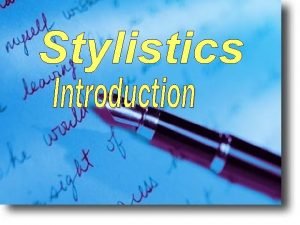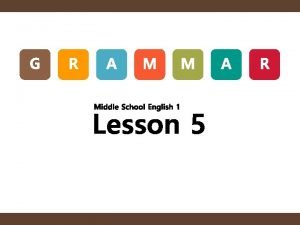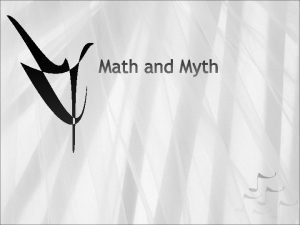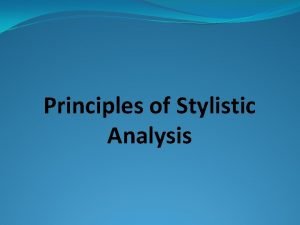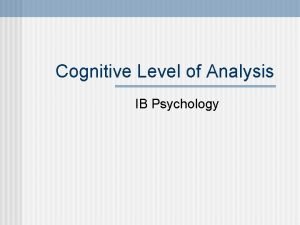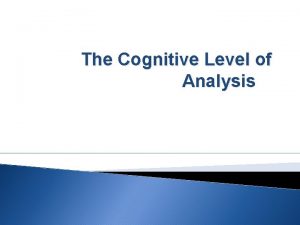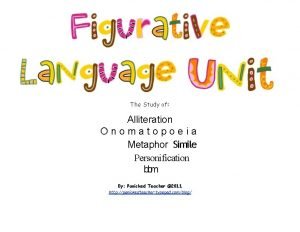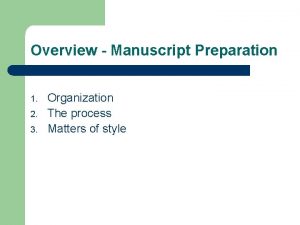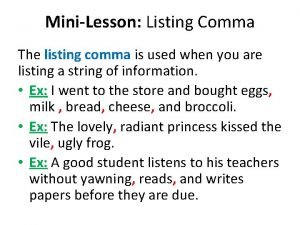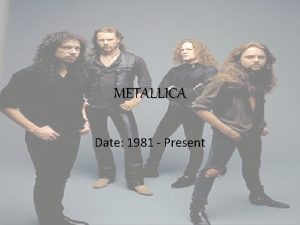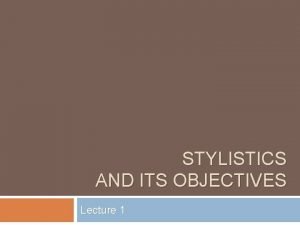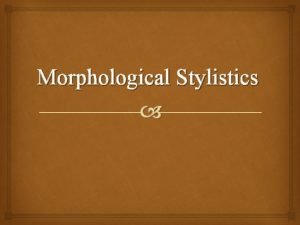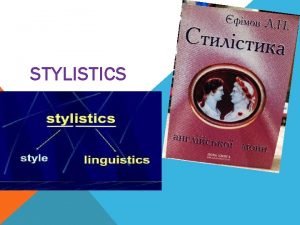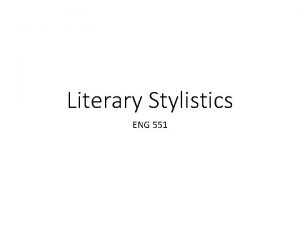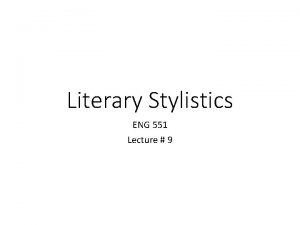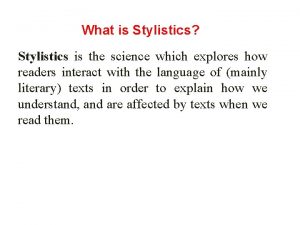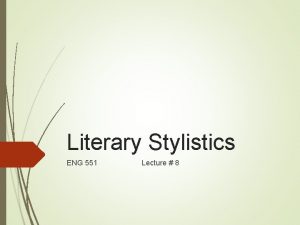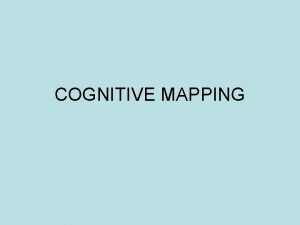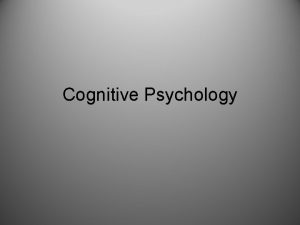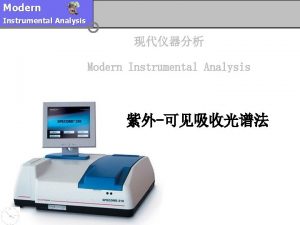Modern stylistics Analysis COGNITIVE STYLISTICS stylistics has since


















- Slides: 18

Modern stylistics Analysis COGNITIVE STYLISTICS

� stylistics has since its earliest days set great store by the use of detailed linguistic analysis as a basis for the interpretation of literary texts. � This focus on the methods of compositional technique has tended to make stylistics writerly in its general theoretical orientation.

� Stylistics � In has in lacked a readerly dimension. the last decade of the previous century, stylisticians began to redress the ‘writerly bias’ in stylistics by exploring more systematically the cognitive structures that readers employ when reading texts.

� This new emphasis in research method saw the emergence of cognitive stylistics or cognitive poetics. � It aims to shift the focus away from models of text and composition towards models that make explicit the links between the human mind and the process of reading.

� With its focus on the process of reading rather than writing, cognitive stylisticians have addressed precisely discussed in their work, arguing that literature is perhaps better conceptualized as a way of reading than as a way of writing.

METAPHOR AND METONYMY � An important feature of cognitive stylistics has been its interest in the way we transfer mental constructs. � The way we map one mental representation onto another when we read texts.

� Stylisticians and cognitive poeticians have consistently drawn attention to this system of conceptual transfer in both literary and in everyday discourse. � They have identified two important tropes, or figures of speech, through which this conceptual transfer is carried out.

� These � tropes are metaphor and metonymy. Metaphors �A metaphor is a process of mapping between two different conceptual domains. � The different domains are known as the target domain and the source domain

� The target domain is the topic or concept that you want to describe through the metaphor. � While the source domain refers to the concept that you draw upon in order to create the metaphorical construction.

� (1) � (2) She really blew her lid. Talk about letting off steam. . . She really blew her lid, I mean really blew her top. She just exploded!

� the relationship between metaphor and linguistic form is an indirect one, which means that we can express the same conceptual metaphor through a variety of constructions.

� Metaphors are not some kind of distorted literal thought, but rather are basic schemes by which people conceptualise their experience and their external world.

� Metaphor is simply a natural part of conceptual thought and although undoubtedly an important feature of creativity, it should not be seen as a special or exclusive feature of literary discourse.

� metaphors are typically more novel and on the other typically less clear. � Writers consciously strive for novelty in literary expression and this requires developing not only new conceptual mappings but also new stylistic frameworks through which these mappings can be presented

METONYMY � In contrast with metaphor, metonymy is based on a transfer within a single conceptual domain. � Staying within the boundaries of the same domain, metonymy involves transpositions between associated concepts.

� Metonymies are more contextually dependent for their interpretation. � A useful test to distinguish one trope from the other is to try to convert the expression into a simile. � A simile makes an explicit connection between two concepts through the use of the IS LIKE formula.

� Applying the test serves therefore to draw attention to the conceptual space between a target and a source domain in metaphor but the same test will collapse when applied to metonymy.

� ANGER IS LIKE A HEATED FLUID IN A CONTAINER � WAR IS LIKE CLEANING
 Cognitive and non cognitive religious language
Cognitive and non cognitive religious language General stylistics
General stylistics Thy bones are marrowless analysis
Thy bones are marrowless analysis I u we they he she it
I u we they he she it The weather was horrible when we arrived
The weather was horrible when we arrived Since ancient times nature has served man
Since ancient times nature has served man Internal foregrounding
Internal foregrounding What is cognitive task analysis
What is cognitive task analysis Cognitive task analysis in the classroom
Cognitive task analysis in the classroom Emotional events
Emotional events Cognitive levels of development
Cognitive levels of development Cognitive level of analysis
Cognitive level of analysis What is metaphor
What is metaphor Storybook
Storybook Busy past tense
Busy past tense Philippines debt 1986
Philippines debt 1986 Since vs because
Since vs because Do you need a comma before since
Do you need a comma before since Metallica since 1981
Metallica since 1981

